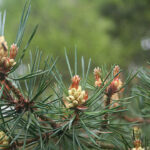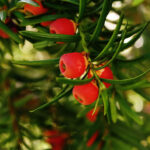
Under the Mistletoe: Exploring a Festive Tradition

Mistletoe has long been a central part of Christmas celebrations, hanging above doorways and offering a chance for a holiday kiss. But there’s much more to this plant than just its role in romance. From ancient rituals to modern-day décor, mistletoe has a rich history that continues to bring joy and magic to the festive season.
Mistletoe’s History and Origins
Mistletoe’s story begins long before it became associated with Christmas. Ancient cultures revered it for its mysterious properties. The Celts, for example, believed mistletoe had healing powers and used it in rituals. The plant’s ability to remain green even in the dead of winter made it a symbol of life and vitality.
In Norse mythology, mistletoe was linked to the tale of Baldur, the god of light, who was killed by an arrow made from mistletoe. After Baldur was revived, mistletoe became a symbol of peace, with the belief that anyone standing under it would be safe from harm.
Mistletoe in Nature and Botany
Mistletoe isn’t just a holiday decoration; it’s a fascinating plant with unique biological traits. Scientifically known as Viscum album (European mistletoe) and Phoradendron (American mistletoe), this evergreen plant is a semi-parasite. It doesn’t take root in the soil like most plants; instead, mistletoe grows on the branches of trees like apple, oak, and lime.
The plant attaches itself to its host using structures called haustoria, which allow it to absorb nutrients and water from the tree. This parasitic relationship can weaken the host tree over time, but mistletoe also plays an important ecological role. Its white berries are a favourite food for birds, while its evergreen leaves provide shelter for insects during the colder months.
Though beautiful, mistletoe comes with a warning: its berries are toxic if ingested. So, if you’re decorating your home with it, take care to keep it out of reach of children and pets.
Modern-Day Use of Mistletoe
Today, mistletoe is most often seen as a festive decoration, often hanging above doorways or incorporated into Christmas wreaths. It’s a symbol of the holiday season, adding a touch of magic and romance to any gathering.
If you’re looking to bring a little more mistletoe into your own celebrations, there are a few ways to do so sustainably. You can purchase mistletoe from reputable sources, ensuring it’s harvested responsibly. Alternatively, you could try growing your own. Mistletoe is a slow-growing plant, so patience is key, but it can be a fun and rewarding project for gardeners.
From its ancient roots in Druidic rituals to its modern-day role in Christmas cheer, mistletoe continues to hold a special place in our holiday traditions. Whether you’re exchanging kisses or simply admiring its beauty, this humble plant reminds us of the magic and warmth of the season.















